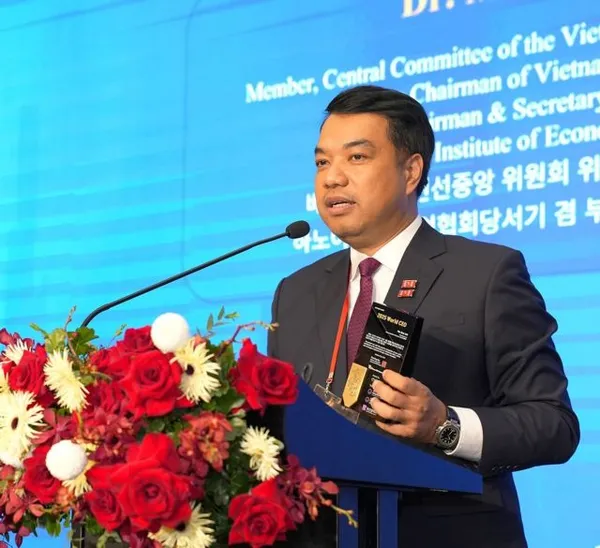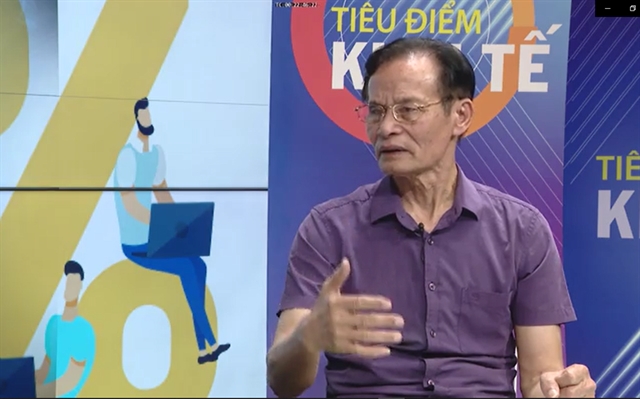 Talking Shop
Talking Shop

 |
| Lê Xuân Nghĩa, a member of the National Financial and Monetary Advisory Council |
A decree on interest rate support from the State budget for loans of enterprises, cooperatives and business households with a total size of VNĐ40 trillion (US$1.72 billion) was issued on May 20 this year. To date, only 550 clients have accessed this programme with new loans amounting to just VNĐ4.4 trillion and interest support amount of VNĐ13.5 billion.
Vietnam News Agency spoke to Lê Xuân Nghĩa, a member of the National Financial and Monetary Advisory Council, about how to accelerate the programme progress but still ensure the legitimate beneficiaries and avoid policy profiteering.
How do you assess the progress of the 2-per-cent interest rate support package?
This is the second time we have executed a support package for enterprises. Drawing experiences from implementing a programme in 2009, this package is deployed on the basis of tight credit control and modest gap between the official interest rate and the supported interest rate, so that businesses cannot borrow at low interest rates and then re-lend at higher interest rates.
More importantly, this package is implemented as a public investment programme of the State, so the accounting is similar to a public investment project which helps achieve more reliable progress than before, avoiding complete loose credit and putting pressure on inflation.
However, the support package is proceeding slowly. In fact, the idea of implementing this programme was constructed since the end of 2021, and if it was put into practice from the beginning of 2022, the effect might be better because the credit room was relatively large at that time.
Now, with just over a quarter to the end of the year and very small credit room left, banks are struggling to find ways to execute the programme given their large registered loan targets.
What is the biggest difficulty of credit institutions in implementing this policy?
The remaining credit room is very small, and not enough to lend when the capital demand increases, especially at the end of the year. This is the issue mostly mentioned by banks when talking about this programme.
However, if you look closely, the remaining lending room is currently around VNĐ400-500 trillion which is not small compared to the total outstanding loans of VNĐ800 trillion of the whole package and will be implemented in two years.
Therefore, in my opinion, the main difficulty is in credit conditions. After the COVID-19 pandemic, most businesses have incurred bad debts or run out of collateral or faced default risk, and these are the three prerequisites to getting a bank loan.
Thus, selecting a customer to lend under this support package while avoiding policy profiteering is not simple for commercial banks - the situation can be described as “finding a needle in a haystack”.
In this condition, commercial banks often have to consider and review some bad debts that can be renewed or review the collateral of the business. Notably, banks often consider approving credit more flexibly for efficient businesses.
These are probably the biggest difficulties facing banks and they are also looking to solve these problems to support business recovery.
What suggestions do you have to remove these difficulties and put the policy into practice more effectively?
The support package is expected to take place within two years but is being carried out quite slowly.
To speed up the progress, it’s necessary to create a certain space for commercial banks to flexibly handle loan cases that may be entangled in one of the three problems mentioned above. Banks may have the independence to decide on loans that almost meet the normal credit criteria and of this support package. This is extremely important and many businesses are looking forward to it.
Currently, banks are waiting for credit lines for the end of this year. Room is determined mainly by the inflation target, but Việt Nam’s inflation now is "imported inflation". Therefore, to reduce inflation, the most effective means is to reduce taxes, in which gasoline is the commodity with the strongest effect.
If we reduce the price of gasoline by 20 per cent, the inflation will decrease by 0.58 per cent, helping bring the inflation down from 4 per cent to 3.5 per cent. Only then, the State Bank of Vietnam can feel more secure when loosening the credit room.
What should businesses, cooperatives and household businesses do to access this support policy?
They are currently very confused as recent economic recovery is driven mainly by large and medium-sized enterprises thanks to their good financial foundation and relatively solid market.
As for cooperatives, business households, small and micro enterprises, the recovery is still not clear, many shops are open without customers.
In addition, people are still worried that the pandemic may return as a new wave of cases appeared in Japan and South Korea. They are worried that if they invest money and reopen restaurants and factories, the return of COVID-19 may lead to social distancing and make their investment fail.
Moreover, the pandemic has severely disrupted the global supply chain, pushing up the cost of input materials and the cost of hiring workers, even for unskilled workers whose wages have increased in the past two years. Therefore, even if they can borrow capital, small businesses are also worried about repayment ability.
On the other hand, the relationship between small and micro enterprises and banks has been poor for a long time, and the relationship among enterprises also lacks solidity. If connecting them, it will be possible to create a cheaper input supply, lower transportation costs and cheaper marketing costs.
Therefore, the banking system and businesses need to create an ecosystem to support each other in terms of capital and consumption of goods for the most important purpose of getting a bank loan and being able to repay the debt.
Besides interest rate reduction, what other fundamental solutions are needed to help them catch up with economic recovery and development?
The most important measure for businesses now is tax reduction. The Ministry of Finance has implemented this solution and created strong effects, easing burdens for the business community.
In addition, commercial banks, businesses and industry associations should connect with each other, creating an internet-based business ecosystem that trades each other's goods, barter and cross-marketing. In that ecosystem, it is also easy to train small businesses to know how to use new technology, using software on mobile phones to manage and solve all business problems. — VNS




